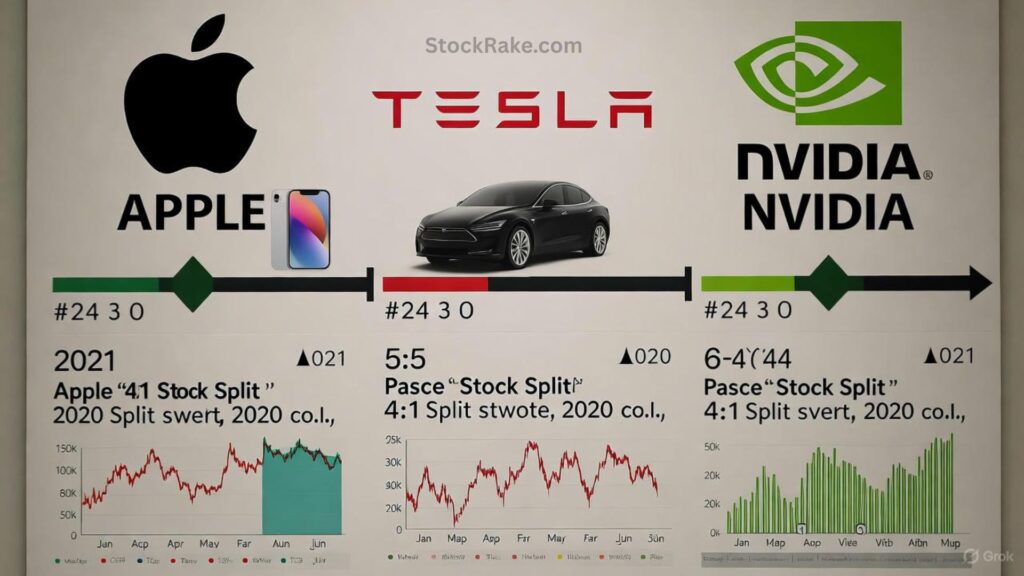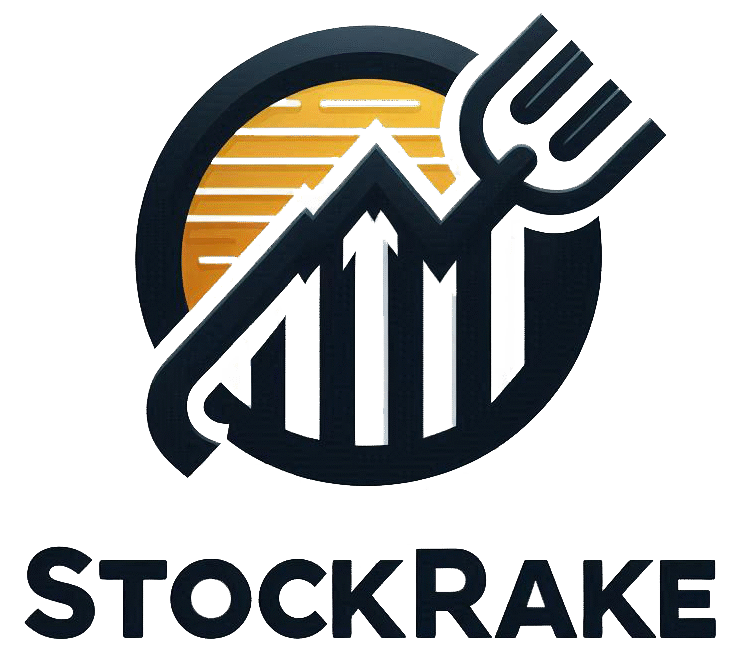Just hearing the phrase “stock split” can make investors sit up and pay attention. But is it really something that changes your wealth? The truth might surprise you.
Think of a stock split like swapping a ₹100 note for two ₹50 notes—you have more pieces of paper, but your total value stays the same. The key question is why a company does it, and how it affects your portfolio in the long run.
In this guide, we’ll break down everything you need to know about stock splits, how they work, and what they really mean for investors.
What Is a Stock Split?
A stock split happens when a company increases the number of its outstanding shares while reducing the price per share proportionally.

The total market capitalization (total company value) remains the same—it’s just divided into more slices.
Example:
If a company’s share is ₹1,000 and it declares a 10-for-1 split, you’ll now hold ten shares worth ₹100 each. Your overall investment value doesn’t change—it’s still ₹1,000.
This move is purely cosmetic, but it can have interesting psychological and liquidity effects in the market.

Also Read: Why Is the Stock Market Down Today? [Daily Update]
Forward Stock Splits

A forward stock split is the most common type. Companies usually initiate these when their stock prices have risen significantly—sometimes to the point that smaller investors might find them expensive.
By lowering the price per share, the company makes its stock appear more accessible.
🧠 Example: Walmart’s 3-for-1 Split (2024)
In early 2024, Walmart (WMT) was trading around $182 per share. The company announced a 3-for-1 split, giving shareholders three shares for every one they owned.
- Before Split: 1 share @ $182
- After Split: 3 shares @ $58.52 each
- Total Value: Unchanged
Interestingly, Walmart’s share price climbed back to around $80 within six months—partly because the lower entry price attracted more retail investors.
👉 Source: Forbes & Yahoo Finance

Also Read: How Much Should You Invest vs Save Each Month?
Does a Stock Split Change a Company’s Value?

In short: no.
A stock split does not alter the company’s total market capitalization or the fundamental value of your investment. It’s simply a change in share structure.
| Example | Before Split | After Split | Total Value |
|---|---|---|---|
| Price per share | ₹100 | ₹50 | — |
| Shares owned | 1 | 2 | — |
| Portfolio value | ₹100 | ₹100 | ✅ Same |
So, while your portfolio might look bigger because you own more shares, the underlying value remains identical.

Also Read: What Are Earnings Reports and Why Should Investors Care?
What About Reverse Stock Splits?

A reverse stock split does the opposite. The company reduces the number of its outstanding shares and increases the price per share.
These are often used by companies whose stock prices have dropped too low—sometimes to meet stock exchange listing requirements or to improve market perception.
Example:
If a company declares a 1-for-10 reverse split, you’ll get 1 new share for every 10 old ones. The price per share goes up tenfold, but the total investment value doesn’t change.
Reverse splits can signal that management is trying to stabilize or rebrand the stock—often used by struggling or penny-stock companies.
Why Do Companies Split Stocks?

There are several reasons why companies choose to split their shares, even though it doesn’t change fundamental value:
1. Attract More Investors
A high share price can seem “unaffordable” to small investors. Lowering it post-split makes it appear accessible—even if nothing changes fundamentally.
2. Improve Liquidity
When share prices are lower, more investors tend to buy and sell them. This leads to smoother trading and tighter bid-ask spreads (the difference between the highest buyer price and lowest seller price).
3. Psychological Boost
Investors often interpret a stock split as a sign of management’s confidence. It implies the stock has grown significantly and that leadership believes in future growth.
👉 See related reading: How Much Should You Invest vs Save Each Month?
Do Stock Splits Help Investors?
This topic sparks a lot of debate among investors and financial experts.
Some view stock splits as a bullish signal—a reflection that the company is thriving and rewarding shareholders. Others argue it’s mostly cosmetic, offering no tangible financial advantage.
💡 A Changing Landscape
Before fractional shares became common, high stock prices could deter smaller investors. But with today’s trading apps allowing fractional ownership, accessibility is less of an issue.
Still, stock splits often generate buzz, media attention, and short-term price movements—making them interesting to traders.
📊 Expert Insight
According to Investopedia, companies announcing stock splits often see a temporary increase in trading volume and share price, driven by investor optimism rather than fundamentals.
Pros and Cons of Stock Splits
| ✅ Pros | ❌ Cons |
|---|---|
| Makes shares appear more affordable for new investors | Can create a false sense of increased value |
| Improves liquidity and market activity | Might trigger short-term volatility |
| Boosts investor sentiment and confidence | Does not improve actual company performance |
| Can make stock options more attractive for employees | Dilutes earnings per share (EPS) |
| Signals strong historical growth | Sometimes used as a PR move |
Case Study: Nvidia’s 10-for-1 Stock Split (2024)

In May 2024, Nvidia (NVDA)—one of the world’s leading chipmakers—announced a 10-for-1 stock split.
- Before Split: 1 share @ $1,000
- After Split: 10 shares @ $100 each
- Total Holding Value: $1,000 (unchanged)
The move didn’t increase Nvidia’s total valuation (over $2.5 trillion at the time), but it made the stock more accessible to retail investors and employees.
Following the split, Nvidia saw a surge in trading activity and retail participation—a testament to the psychological power of a “cheaper” share price.
Note: Most stock charts automatically adjust historical prices to reflect splits, ensuring visual consistency from the IPO onward.
Final Thoughts
A stock split doesn’t make you instantly richer—but it can be a powerful signal. It suggests the company’s share price has grown enough to justify a split and that management expects continued investor interest.
For long-term investors, focus less on the split itself and more on the company’s fundamentals—its earnings, cash flow, and competitive position. Those are what truly drive wealth creation over time.
Bottom line: A stock split changes perception, not value. But it can still be a bullish sign when backed by strong business performance.
Q1. Do stock splits increase my wealth?
No. A stock split doesn’t change your total investment value—it just divides it into more shares.
Q2. Is a stock split a good sign?
Usually yes—it often reflects strong past performance and management confidence, but it’s not a guarantee of future returns.
Q3. Can I lose money in a stock split?
Not directly. But post-split volatility or market overreaction could impact short-term prices.
Q4. What’s the difference between a stock split and a bonus issue?
A stock split divides existing shares, while a bonus issue distributes new shares from retained earnings.
Q5. Should I buy before or after a split?
There’s no guaranteed strategy. Some investors buy before the split anticipating buzz; others wait until after prices stabilize.


